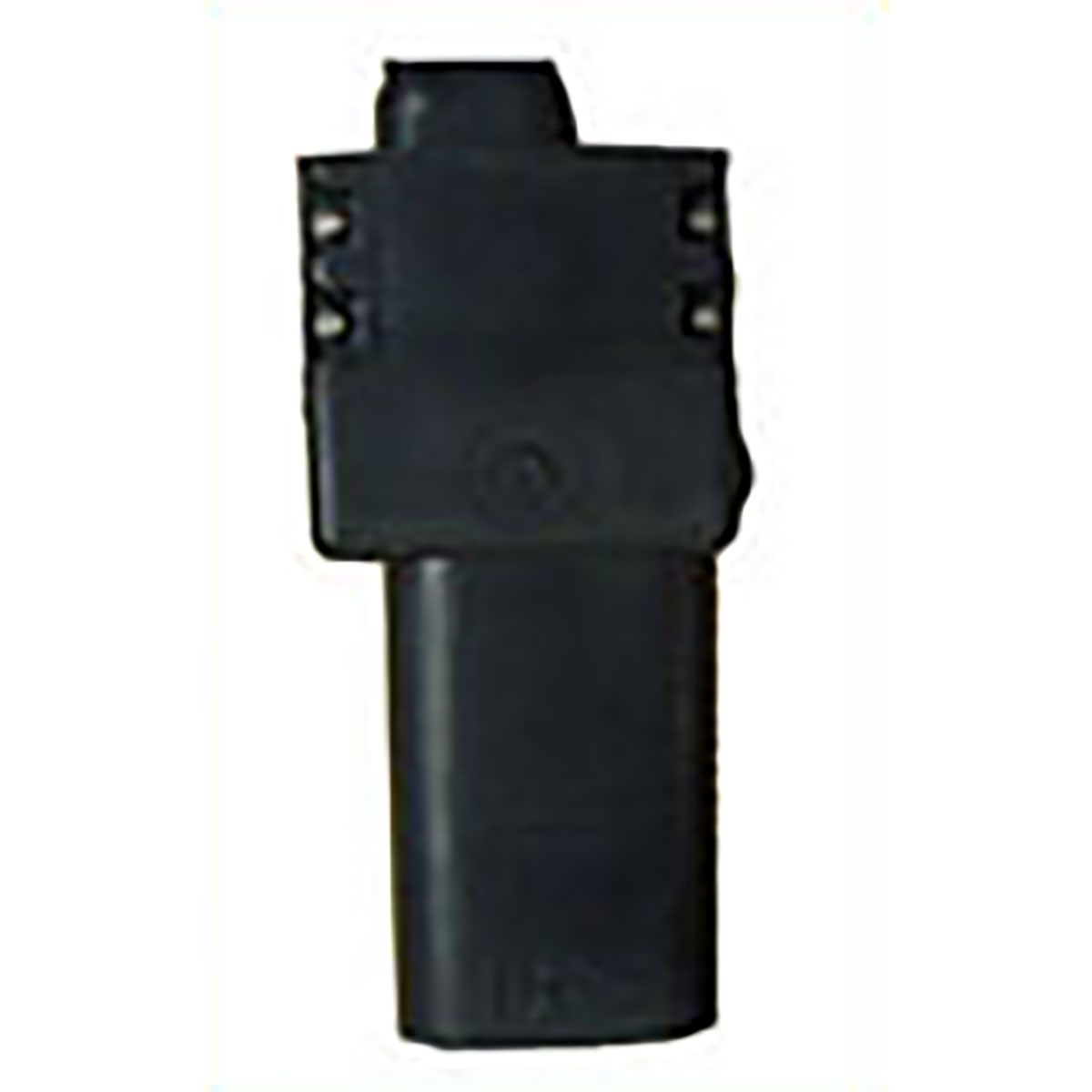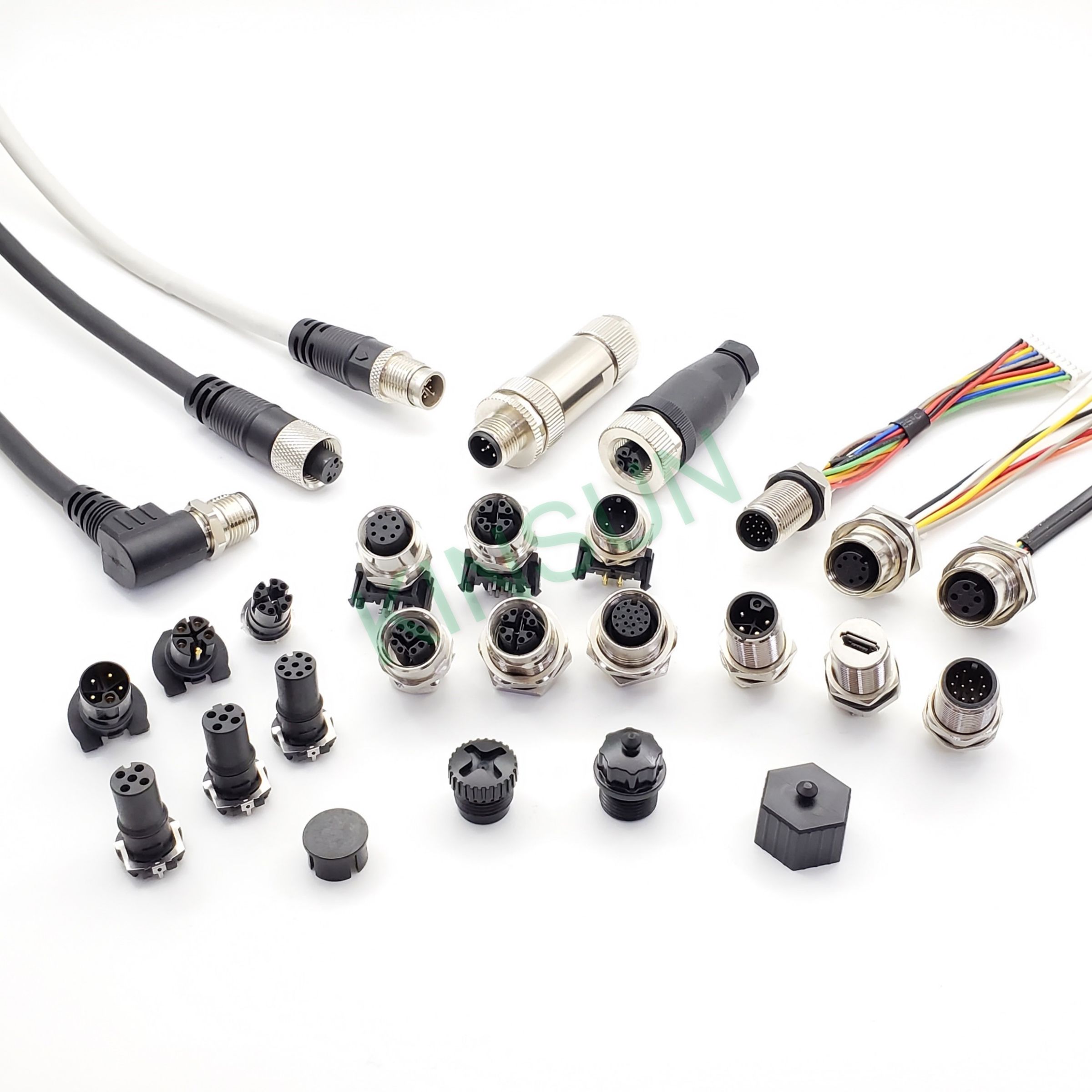Aircraft Connectors - ITT Cannon CT series MIL-DTL-5015 connectors are manufactured to MIL-5015 for use in very harsh environments. ITT Cannon CT series heavy duty 5015 connectors were originally designed as aerospace components and are popular, cost-effective, rugged commercial and military connectors.
In the interest of making your future maintenance efforts less painful, try to locate your power bus and ground terminals where they will be easily accessible. Install these units so you will have space for manipulating a screwdriver or wrench when attaching the many wire terminals to them.
Aircraft Connectors

5. With the wire firmly bottomed inside the insulated terminal, slip the crimping pliers over it. Make your first crimp over what you think is the middle of the metal wire grip inside the insulator. This should be approximately the first 1/3 of the length of the terminal's insulator.
Apply a good squeeze. . . not so hard, however, that the insulation is cut by the crimping tool. On the other hand, the crimp should be sufficient to lock the wire inside the terminal. • Wire: #18 wire gauge for most of the electrical system, #16 wire gauge for landing and navigation lights, #18 wire gauge shielded wire for connecting the magnetos, #8 or #10 wire for connecting the alternator, #4 welding cable.
for connecting the battery. Use #1 or #2 if the battery is way back in the fuselage, or if you generally have severe cold winters. • Sufficient numbers of insulated ring tongue terminals for connecting the above listed circuit wires.
You will probably need twice as many ring terminal connectors as you think you'll need. . . especially the red ones. Buy a package of a hundred for less than $10 at an electronics store as opposed to buying a small package of 5 in an auto parts store for about $1.
Good buys for insulated ring terminals may also be found at most fly-in flea markets. a. You didn't crimp it hard enough, or b. Your wire size is too small for the insulated ring terminal you used, or

c. You may have made the crimp too far back and missed crimping the metal portion of the terminal inside the insulator. Some of the cheaper varieties might not crimp the wire effectively, and that is not good.
An unreliable electrical connection, or one that becomes completely separated, is something you don't need to have happen in flight. Don't be in too big a rush to install tie wraps to organize the wiring. Only too often you will have to cut many of them away as additional wires are introduced.
Temporarily, you can use some of those common wire twists or string to clamp two or more wires together. Originally designed specifically for aircraft, Souria 851 Series circular connectors are used in a wide array of both commercial and military applications thanks to their ability to deliver a strong connection without compromising a lightweight, compact frame, and their high number of mating cycles (500 cycles
) and corrosion resistance (500h salt spray). Electrical wire can be found in the Radio Shack stores, auto parts stores, electronic outlets, fly markets, and homebuilder catalog outlets. I dare say much of it does not measure up to the military standard mentioned - primarily, I suppose, because the insulating coatings would, in the event of fire, give off toxic fumes.
The smoke and fumes could well incapacitate the crew (that's you, amigo). The most important consideration in wire selection is that the wire be made up of twisted wire strands... not a single solid wire core.
Stranded wire stands up better under vibration and is less likely to break. Toll Free: 877-477-7823 Customer Service: 800-861-3192 Fax: 800-329-3020 Just about the only special tools you will need are a pair of wire crimping pliers and possibly a good wire stripper.

Other tools, like needle nose pliers, screwdrivers, a pair of diagonals, wire cutter, an electric drill with an assortment of small bits, and a few small wrenches which you probably already have, are a few of the necessary items.
One problem builders create for themselves is making future access difficult in other ways. For example, crowding the installation of fuses, circuit breakers, connectors and instruments. . . even when you have plenty of panel space.
Making A Crimped Connection Be sure the insulated ring terminal you select is the correct size for the wire to be connected. Only the insulated portion of the terminal is color-coded to identify the wire size it will accept.
For example: • A circuit breaker, or a fuse/holder, for each important circuit. *A switch or a circuit breaker switch for each circuit you must control: flaps, nav lights, strobes, fuel pump, avionics master, master switch and ignition switch, for example.
Believe me, this is much easier to do when you have the unit laying on the bench where you can see what you are doing. Obviously, if you install the switches, circuit breakers, fuses or lights in the instrument panel first - and then try to make the connections from behind, you will have a difficult time doing so.
You might as well be prepared for the ordeal by getting a few extra screws and lock washers together because you will probably be dropping a few before you get everything connected. Amphenol MIL-DTL-38999 Series III Circular Connectors offer the highest performance capabilities for the most demanding applications in both general duty and harsh environment applications.

Developed to operate under severe high temperature and vibration, the Amphenol MIL-DTL-38999 Series III Circular Connectors feature rapid coupling via the Tri-Start™ thread, shell-to-shell or metal-to-metal bottoming, and improved EMI shielding. Amphenol designed these features to provide an EMI shielding capability of 65dB minimum at 10GHz and corrosion resistance up to 500 hours of salt spray exposure.
The Amphenol MIL-DTL-38999 Series III Circular Connectors have a rated current range of 1.5A to 5.0A, temperature range of -65⁰C to +175⁰C, insulation resistance of 5000MΩ min.@ 500VDC 25°C, and a dielectric withstanding voltage of 1000VRMS @ sea level.
These rugged and highly reliable circular connectors are ideally suited for industrial, military and commercial air, military vehicles, missiles and ordnance, C4ISR, and space applications. Circuit Identification Label or number each wire as you connect it.
Later you might be hard pressed to identify the wire and its function. Label the wire approximately 6" from the unit to which it is attached. You can make small tag labels using adhesive tape and a Sharpie pen. At any rate, the marking should be in waterproof ink. Using masking tape tags is not recommended except for
temporary use. The masking tape tags age rapidly and become brittle. In addition, the markings tend to rub off or fade. As soon as you acquire your crimping pliers, try making a few test crimps. For example, a well crimped insulated ring terminal should resist a fairly strong tug (about 5 pounds) without allowing the wire to separate from the insulated connector.
4. Insert the bared wire in the ring terminal so the insulated edge of the wire bottoms against the back end of the metal portion inside the insulator (terminal). The bared stranded wire should barely protrude from the other end (ring side) of the terminals metal grip.

There are several sources for crimping tools, among them are the Radio Shack stores, auto parts stores, Sears, and most hardware stores. Quite often the crimping tool is sold as part of a wiring kit packaged in an impressive plastic display case.
Included in such a kit would be an assortment of insulated type terminals. Because of the assortment of terminal sizes included, you might consider this to be an acceptable starter set. Electrical Wire The wire permitted for use in military aircraft, and blessed by the FAA, is identified by the specification, MIL-W-22759/16.
There are a lot of different types of wire out there where you are, and a lot of it will find its way into homebuilts. . . maybe even into your own. ITT Cannon CT series MIL-DTL-5015 connectors are manufactured to MIL-5015 for use in very harsh environments.
ITT Cannon CT series heavy duty 5015 connectors were originally designed as aerospace components and are popular, cost-effective, rugged commercial and military connectors. 2. Using the wire crimper's built-in wire stripper, insert approximately ¼" of the wire into the crimping tools' stripping notch. Squeeze the crimping tool handles together and rotate the tool about 45 degrees each way to impose a cutting action on the wire's
insulation. Pull on the wire and a ¼" length of insulation will be stripped nicely from the end of the wire. You could use a separate automatic wire stripper tool which may or may not do a quicker job.
For that matter, even a knife will do in a pinch if you are careful not to cut into the stranded wires. Simply cut off a bit of tape with the number you want and wrap it around the wire to identify it.

It is a simple and neat way to do it. Of course, the drawback is that you have prepared a "poop sheet" to remind you what circuit a particular number is assigned to. Similarly, some builders identify their fuses and circuit breakers by numbering them.
This is a lot easier than trying to find descriptive labels small enough to attach above each fuse or circuit breaker installed in your instrument panel. 7. If your connection passes its "tug test," make a second crimp near the back end of the insulator to squeeze it snugly around the wire's insulation.
The purpose of this crimp is to firmly support the wire and help absorb some of the stress to which the connection might be subjected to from in-service vibrations. NOTE: It is said by those who know that whenever you drop a washer, screw, or nut in your airplane it will vanish before your eyes and will not be found again until you no longer need it.
Other than that profound observation, the main drawback to the technique of pre-wiring switches and circuit breakers is that you will have to allow generous lengths for the wires because you may not be sure exactly how long each wire has to be.
6. Check your success by gripping the terminal with the fingers of one hand while you tug on the installed wire with your other hand. If the connection won't separate with a tug of approximately 5 pounds you have a winner.
If it comes apart: Other Needs As for materials and parts needed, much will depend on the complexity of the aircraft to be wired. You will need a small roll of adhesive tape and a fine point permanent ink pen for labeling your wires.
Of course, even the simplest system requires the installation of electrical wires, connectors, fuses or circuit breakers, and the accessories you want to operate.
aircraft electrical connectors, aircraft cable quick connectors, aircraft electrical wire connectors, aircraft electrical connector suppliers, aircraft wiring connectors, aircraft cable connector, aircraft connectors suppliers, airplane cable connectors